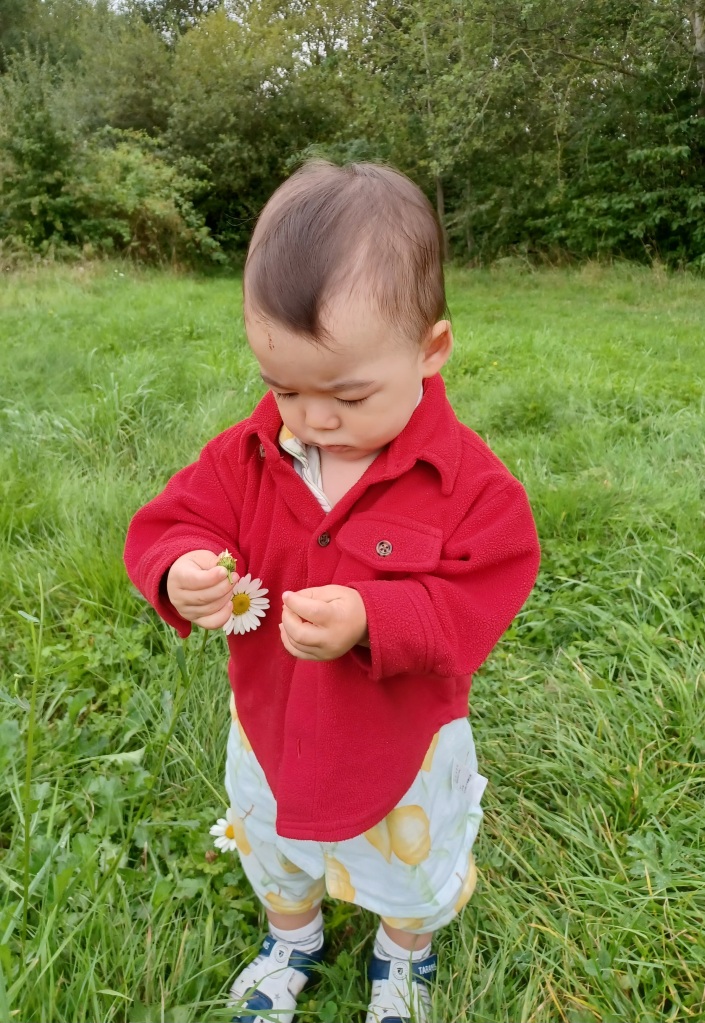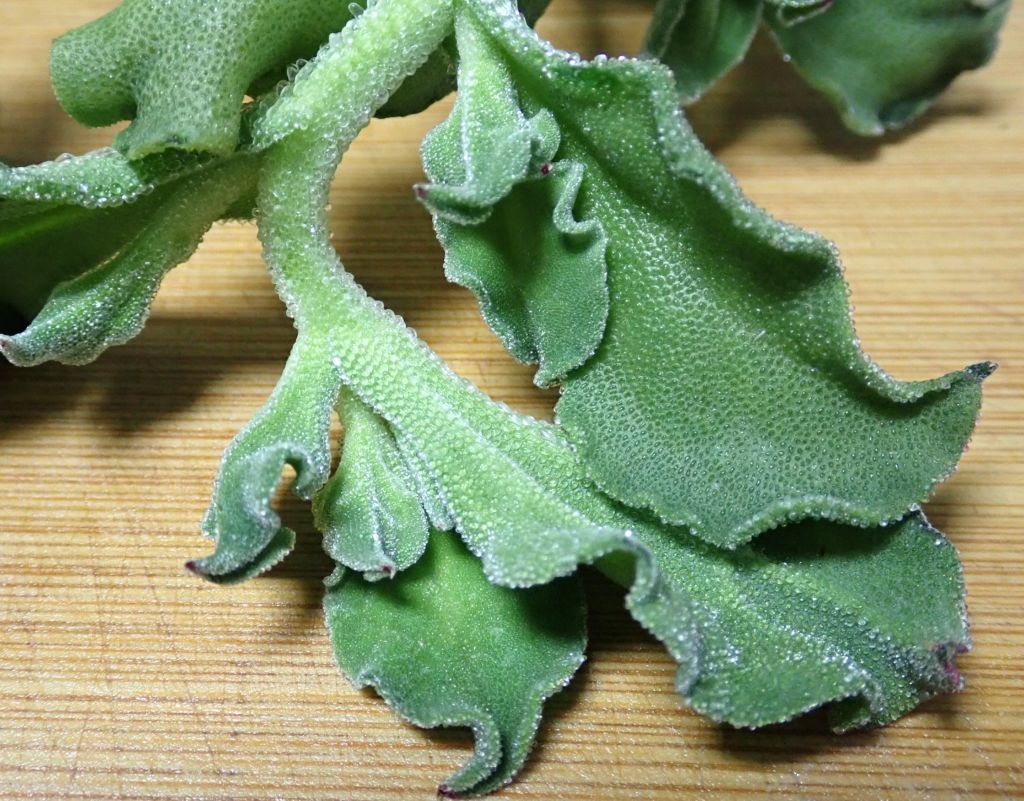I’m delighted to say that I’m back in China, sneaking some bonus time with my son and his family before the start of term. My main role is as soft-touch grandmother and mum’s helper but I can’t help being interested in the plants around me, especially as I’m currently updating some of my plant evolutionary history and physiology lectures. I’m particularly proud of the fact that my 16 month old, bilingual grandson’s first clear word in English was ‘flower’!

Opportunities for hunting for wild plants are limited in the centre of Chengdu but there are often interesting plant foods on my plate! Saturday’s salad of Bing Cao or ‘Ice grass’ leaves in a tasty sesame dressing was a new Sichuan dish to me and we replicated it for lunch today.

Of course the botanist in me wanted to know what species of plant this might be, with little glass-like bubbles on the surface of the leaves and stems. I had a hunch it was probably a succulent halophyte and sure enough, it turns out to be Mesembryanthemum crystallinum, a sub-tropical species of African origin, closely related to the ‘Livingstone Daisies’ which my grandfather used to grow every year in his garden. Bladder-shaped epidermal cells on the leaf and stem surface store water and give the plant its glistening appearance.


M. crystallinum is interesting for several reasons. Under favourable growing conditions it uses standard C3 photosynthesis but can switch to CAM (Crassulacean Acid Metabolism), where the stomata on the leaves open only at night to take up carbon dioxide, when it is short of water or in a salty environment. The mesophyll cells of succulent leaves like these are efficient at storing the organic acids produced when carbon dioxide is initially fixed at night. Like most salt-tolerant or halophytic plants, M. crystallinum also takes up and accumulates salt in its tissues to maintain a water potential gradient with the soil. These salts are concentrated in the epidermal bladder cells to avoid them causing damage to more salt-sensitive tissues. M. crystallinum is normally an annual plant and, when it dies back after flowering and setting seed, this salt is released back into the environment. In a clever move on the plant’s part this both promotes germination of its own seeds and prevents the germination of other, non-halophyte seeds. For this reason, and because of its vigorous growth under poor conditions, M. crystallinum is regarded as an invasive species in some parts of the world, where it has been introduced.
However, M. crystallinum is not just a tasty salad ingredient. Being able to engineer CAM characteristics into C3 crops is a Holy Grail for plant breeders, particularly as our climate changes to hotter, drier conditions in many parts of the world, and facultative CAM plants such as M. crystallinum can be used to study how plants make the switch from C3 to CAM photosynthesis under stress conditions, by measuring changes in characteristics such as leaf area, stomatal behaviour, gas exchange, leaf succulence and relative water content. Guan et al. (2020) showed that six days of salt treatment was sufficient to start the transition from C3 to CAM in M. crystallinum seedlings, with the switch being more or less complete after two weeks; they hope this will lead on to work to identify the molecular switches responsible for this transition. However, although CAM allows M. crystallinum to grow in stressful environments, this is not a cost-free process – plants will produce fewer seeds on average, when using CAM, as it is less energy efficient than regular C3 photosynthesis. Being able to switch the pathways on and off in crops plants in response to changes in conditions would be even more valuable than making a permanent switch to CAM.
Guan Q., Tan B., Kelley T.M., Tian J. and Chen S. (2020) Physiological Changes in Mesembryanthemum crystallinum During the C3 to CAM Transition Induced by Salt Stress. Front. Plant Sci. 11, 283. doi: 10.3389/fpls.2020.00283
I’m currently reading and thoroughly enjoying Demon Copperhead, Barbara Kingsolver’s updated take on the story of David Copperfield, set in rural Appalachia.
It’s not me picking stuff in the allotment at the moment, obviously, but I’ve harvested all the potatoes now – a good crop of Cara and Pink Fir-apple, and a rather indifferent one of King Edward potatoes. The raspberries and runner beans are still going strong and the greenhouse is providing a handful of tasty tomatoes every day.
We’ve been eating lots of interesting things apart from the Ice grass – more on some of these in due course. Yesterday’s highlight was two big shared pots of food, one of fried fish and tofu and the other a soup of tofu and pickled vegetables. The dried yellow flowers or Huang Hua in the vegetable soup turned out to be the unopened flowers of Day lilies – the Hemerocallis I grow in my front garden. Judging by the number needed for a bowl of soup, I think I’ll be better off buying the dried flowers from one of our local Chinese supermarkets, though!